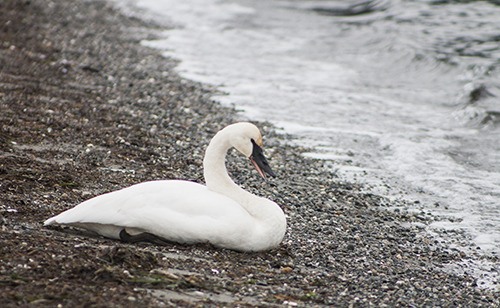The lone Trumpeter swan seen on the shores, and on the waters, of Crescent Beach was found dead on Saturday.
“Volunteers had been checking on it, and it was becoming more lethargic,” said Penny Harner, who works for Wolf Hollow Wildlife Rehabilitation Center located in Friday Harbor.
The swan was monitored between Dec. 11 and Dec. 14.
“It’s unusual,” said Shona Aitken, Wolf Hollow education coordinator, in an interview with the Sounder last week about the swan’s location.
Aitken said swans will only be found in salt water when other sources of water are frozen. The other oddity is that the swan was alone when these birds commonly travel together.
“It’s hard to know what has happened at this point … maybe it lost its flock for the moment,” said Aitken.
A Wolf Hollow volunteer had been to Crescent Beach early last week to check for any injuries on the swan, and no obvious wounds or problems were spotted. On another occasion Aitken said one of their volunteers checked on the swan, and it flew quite a distance before coming back down on the water.
“That tells us it can fly and would be hard to catch, but doesn’t help us find out if it has any physical problems,” she added at the time.
Trumpeter swans are the largest of North American waterfowl with wingspans that can reach up to eight feet. Aitken estimates about 80 swans gather around the San Juan Islands during this time of year. They fly south from Alaska in the winter for a gentler climate. They are often spotted in ponds and lakes and by spring will be seen in grassland areas before they head north in March.
The body of the bird will be sent to the Washington Department of Fish and Wildlife where experts will try to identify how the swan met its end.



